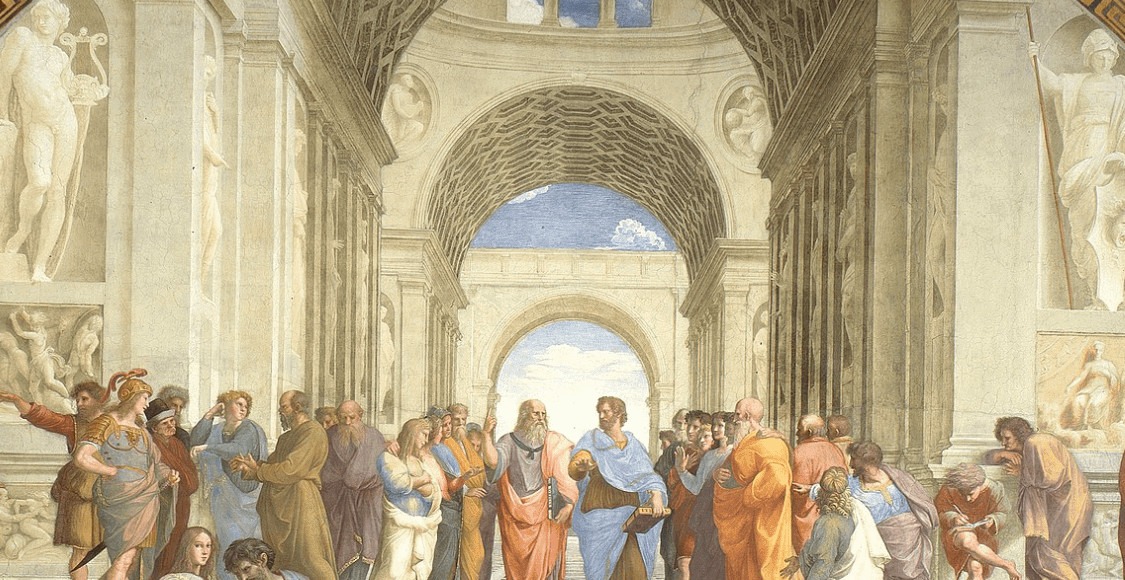‘The School of Athens’: the impact of frescoes in the 21st century
‘School of Athens’, one of the Vatican’s and Raphael Sanzio’s most distinguished frescos, explores Sanzio’s work for the Pope between 1509 and 1511, as well as his admiration for Ancient Greece and Renaissance art. I first saw this fresco in January 2023, when I went to the Sistine Chapel with my father, and I could sense Raphael’s personality through them, with the ancient stories depicted fascinating me. The artist captured pivotal moments to highlight the impact of Catholicism on society and strengthen its power within Europe; one of these frescoes, ‘The School Athens’, moved me particularly. This only led me to wonder how Raphael created such powerful paintings that continue to have an impact on the younger generations of the 21st century.
I also came to learn that, in 1509, Pope Julius II commissioned Raphael to paint this fresco to decorate his personal library and to draw attention to the Church at a time when Catholicism had a negative image. In the early 1500s, the Vatican began to lose support due to corruption, and the printing press. A scandal erupted in the Catholic church when they began selling indulgences to people in order to reduce the punishment they would face in purgatory for their sins. They could be purchased from the Catholic Church for a fee, which many saw as a corrupt practice, and with the invention of the printing press, became more difficult for the Vatican to conceal.
Yet, the painter himself had a strong relationship with the Church, as illustrated by his creation of the ‘Madonnas’ fresco in 1505, which represents the Virgin Mary. This enchanted my admiration for the artist. As a 19-year-old myself, learning that Raphael painted such masterpieces in his twenties spurred a personal connection – only furthered by my understanding of his true impact on Renaissance art.
Raphael used art as a form of praise for his role models
My interest was also piqued by the ‘School of Athens’ as it led me to believe that the Pope commissioned Raphael to cover up the Church’s sins. While it distracted people from figuring out the true nature of Catholicism, Raphael used art as a form of praise for his role models and inspiration at the time.
The 13th and 14th figures in the painting are said to resemble Leonardo Da Vinci and Michelangelo, which only highlights Raphael’s admiration for them. Raphael created the illusion of depth and space in the painting using the linear perspective techniques taught to him by Da Vinci, giving the figures the appearance of standing in a real, three-dimensional space. One must not overlook how this painting incorporates humanism too, as the fresco itself takes place in an Ancient Greek school.
I was face to face with a proto-feminist action
Apollo, Aristotle, and Hypatia are three key figures from Greek and Roman mythology featured in this fresco. Apollo was one of the twelve Olympian gods of Greek mythology, and he was frequently associated with music, poetry, and the sun, whilst Hypatia was known for being the greatest mathematician and astronomer of her time. She was the leader of Alexandria’s Neoplatonist school of philosophy, impressively overcoming her society’s profound sexism, and dying viciously at the hands of ignorant extremists. Raphael’s inclusion of her as the ninth person in the fresco intrigued me as I was face to face with a proto-feminist action. I was moved by how he used his face to present Hypatia at a time when society was struggling with severe gender inequality.
Raphael wanted to reconnect to the essence of wisdom thinking, as inaugurated by the Greeks, by bringing ‘The School of Athens’ to the Vatican. By transforming those characters into the faces of contemporary wise men of his time, such as Leonardo da Vinci and Michelangelo, he was making a powerful statement about the Vatican as a school of thought and wisdom – a belief which continues to be studied today.

Comments